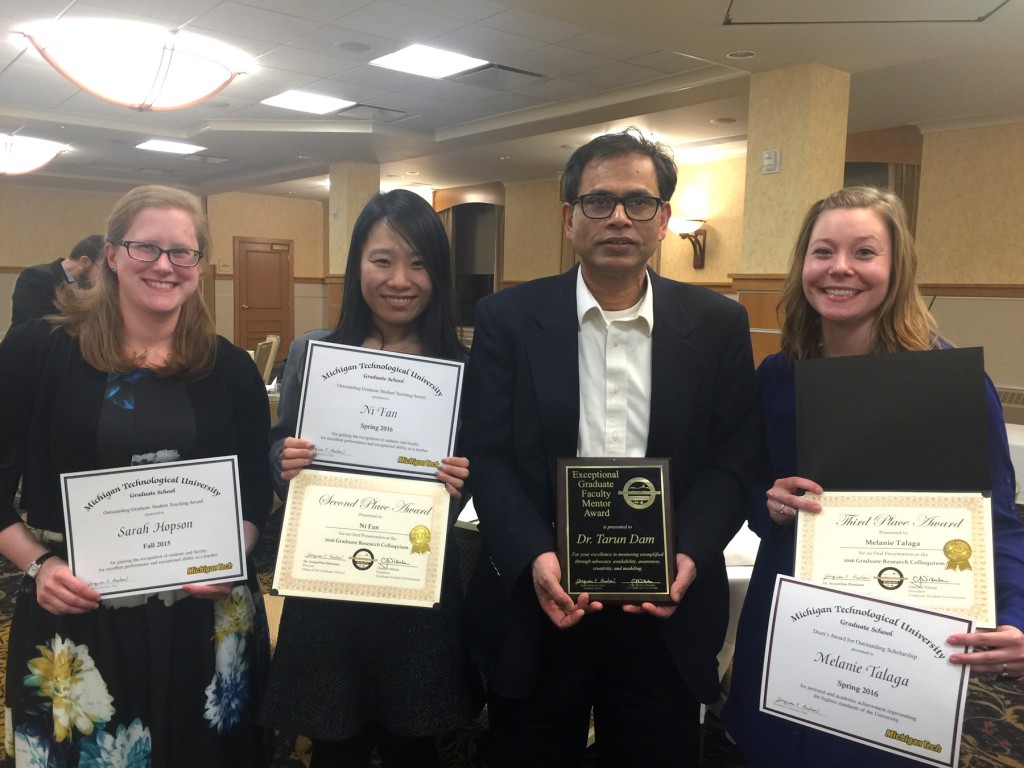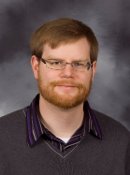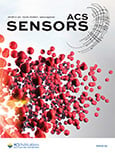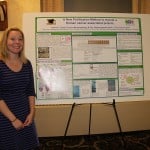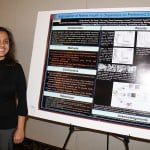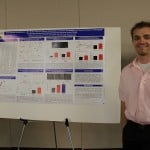Graduate student Melanie Talaga is a Spring 2016 recipient of the Dean’s Award for Outstanding Scholarship, as announced by the Graduate School.
Talaga’s advisor is Tarun Dam.
Talaga also received the Third Place Award for an Oral Presentation at the 2016 Graduate Research Colloquium. Hers was the Highest Attended Presentation.
Graduate students displaying research at Michigan Tech
“We use really big words and we’re use to using those words because we deal with it everyday,” said Melanie Talaga, MTU doctorate student. “Other general communities do not understand those words so we need to learn how to practice and break it down to everyone’s level. So then we can communicate our science and get people interested in our science.”
Read more at Upper Michigan’s Source, by Aleah Hordges.
